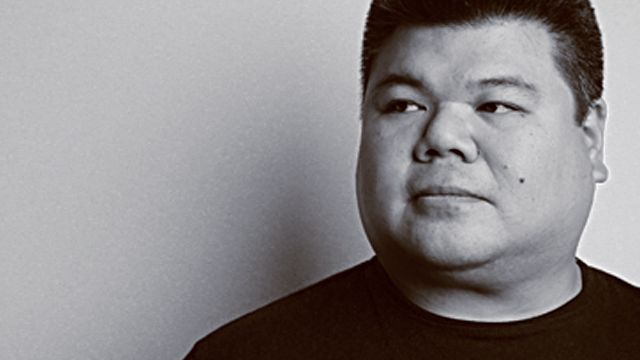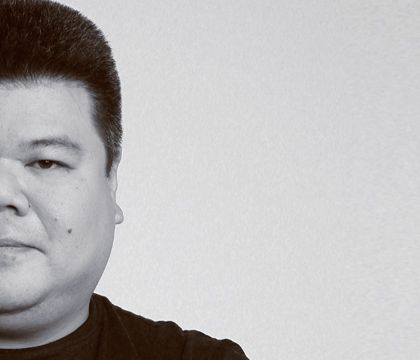SUMMARY
This is AI generated summarization, which may have errors. For context, always refer to the full article.


MANILA, Philippines – He has had no formal training in filmmaking, and his path had once led him to playing guitar for the band DaPulis and a year of culinary studies in Florence.
But for first-time filmmaker Jay Ignacio, the unspoken stories around Filipino Martial Arts became such a compelling theme that he spent 3 years of his life documenting some of the Philippines’ most prominent, living Filipino Martial Arts (FMA) legends in a full-length documentary called The Bladed Hand.
“I was searching for a cultural story to tell,” shares the frustrated history teacher and part-time improv actor. “I looked at Philippine dance, I looked at theater, but there is no other indigenous art that has had such a global impact as FMA.”
Ignacio is referring to the fact that Filipino Martial Arts — the collective term for the martial arts known as Arnis, Eskrima and Kali — is perhaps one of the Philippines’ best-kept secret exports.
It is used to train police and military personnel and even special forces in countries such as the United States, France, Germany and Russia, among others, and is practiced by more foreigners than Filipino FMA practitioners.
FMA has also gained prominence in Hollywood fight choreography and was popularized by movies such as Mission Impossible (1996), Lara Croft: Tomb Raider (2001), Resident Evil (2002), The Book of Eli (2010) and the Bourne Trilogy.
The power of a great story told on film
“Showbiz is the greatest seller of culture and ideas,” Ignacio notes of FMA’s popularity in Hollywood, “And there’s nothing wrong with that. It’s great that Hollywood has embraced FMA — even much more than Filipinos have.”
The onscreen appeal of FMA was so strong for Ignacio that it made sense for him to devote his first foray into filmmaking to this subject.
More importantly, he wanted to acknowledge and honor the living Filipino FMA masters — “cultural treasures”, he calls them — who “propagate Filipino Martial Arts and culture around the world.”
What then ensued were 3 years, 7 figures, countless hours of research and correspondence and thousands of airline miles following the FMA storyline around the Philippines, Los Angeles and Russia.

With just one co-editor, one official photographer, 3 cameras (which he sometimes operated by himself), one Mac and a whole lot of faith, Ignacio captured the stories and insights of such FMA luminaries as Dan Inosanto, known as the “heir” to Bruce Lee’s legacy; Jeff Imada, one of Hollywood’s most popular fight choreographers; Daniel “Mumbakki” Foronda, the first Filipino to train Russians (including the Spetsnaz, the Russian special forces) in FMA; and Cacoy Cañete, the 93-year-old grandmaster of Cacoy Doce Pares, among many others.
The film also features interviews with Prof. Felipe Jocano of the University of the Philippines Anthropology Department; Filipino Taekwondo Olympian Monsour del Rosario; and former Senator Juan Miguel Zubiri, who authored Republic Act 9850 declaring Arnis as the “national martial art and sport.”
The film became a testament not only to the great masters of FMA, but also to the inherent struggle to keep the Philippine indigenous fighting arts alive and swinging.
A legacy for a new generation of Filipinos


Ignacio is grateful for the support of the FMA community, considering that he was (and still is) an outsider who only knew of the martial art through friends.
Although he did encounter some resistance and criticism from some quarters, he said that “98% (of the intended film subjects) surprisingly accommodated me.”
The iconic Inosanto, for instance, not only granted Ignacio an interview upon the latter’s surprise visit to the FMA master’s school in Los Angeles, he broke his own protocol by giving Ignacio “an all-access pass to film everything that was going on inside the school, for two weeks.”
For Ignacio, however, the real essence of the documentary is not simply to elevate the FMA masters but, more importantly, to show a new generation of Filipinos what they could be missing if they take this cultural asset for granted.
“How sad it is that we know very little about ourselves,” Ignacio laments. “Arnis is so far from the Filipino mindset. The Filipino mindset is in American Idol.”
He hopes to take The Bladed Hand to school roadshows and guerilla screenings around the Philippines, as well as show it in key locations abroad. His biggest dream, however, is for the film to be “reference material for future generations of students.”
“The Bladed Hand is not just a documentary about Filipino Martial Arts,” he emphasizes. “The Bladed Hand IS a cultural documentary … This is the legacy that I will leave behind.”
“This film will last longer than I will,” he adds.
Here is the trailer of The Bladed Hand:
Through this film, Ignacio’s example of tireless patriotism, and the support of the FMA community around the world, we hope that so will Filipino Martial Arts. – Rappler.com
(For more information on The Bladed Hand and Filipino Martial Arts, join their group on Facebook.)
Add a comment
How does this make you feel?
There are no comments yet. Add your comment to start the conversation.